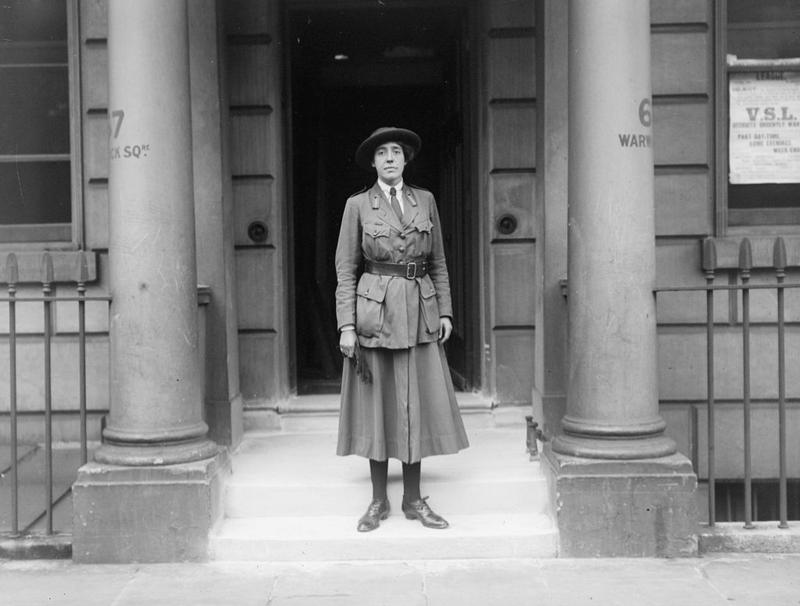How World War I Changed Women’s Fashions
By | May 31, 2022

Up until 1914, women’s fashions followed the Edwardian styles, with high-necked blouses, gathered, crinoline skirts, and enormous hats. Designers in Paris set the newest fashion trends. The outbreak of World War I in 1914 changed all that. Almost overnight, styles changed, hemlines rose, tailored lines loosened, and New York City emerged as a fashion center.

Edwardian Styles
Coinciding with the reign of England’s King Edward VII, who sat on the throne from 1901 to 1910, Edwardian fashions for women were characterized by tailored suit-like dresses. Women were covered from their necks to their wrists to their feet. Women aspired to create an S-shaped silhouette, with tightly fitted bodices and large bustles. Corsets and stays kept a woman’s figure in shape. Women wore large, extravagant hats, gloves, and carried umbrellas. For the well-to-do, expensive fabrics, lace, trimmings, and silk linings were used.

World War I
When World War I broke out in Europe in the summer of 1914, profound changes took place in Europe and the United States. Because of the fighting, the rationing, and the disruption in communications, fashion designers in New York City took the lead in the fashion industry. Several factors were in play, including the fight for women’s suffrage and the rise of women in the workforce. Coupled with issues brought about by the war, women’s styles needed a drastic upgrade. Women were needed to fill jobs left open when men left to fight in the war and some women volunteered to serve as nurses or aids in the war. Long skirts and form-fitting blouses were impractical.
Changing Styles
To start, hemlines rose to above the ankle. Although many traditionalists viewed this as shocking and disgraceful, the shorter skirts gave women more flexibility and mobility. Additionally, the shorter hemlines took less fabric which was important during wartime. The Edwardian styles very quickly fell by the wayside, giving way to more modern clothing styles. Military-style accents popped up in women’s fashions, too. For the first time, accents like epaulets, belted military-style jackets, and even trousers were added to women’s styles. Overall, fashion was more modern and less feminine than ever before.

The ’War Crinoline’ and Other Underthings
The so-called ‘war crinoline’ became popular at the start of World War I. This new style featured a bell-like skirt with a wide-over skirt. But this style was short-lived. As the war progressed, skirt hems crept up the calf.
Prior to World War I, the women wore corsets that kept their figures tightly under control at the expense of comfort. Wearing a corset was an ordeal. In most cases, a woman needed another person to help her lace and tighten the corset strings. When the war started, the practicality of corsets was called into question. At this time, corset wearing began to decline in favor of other types of female undergarments that were less cumbersome and restricting, yet still supportive. In general, the layers upon layers of fabric underneath women’s dresses were viewed as wasteful and unnecessary in the face of war. It was finally time for women’s fashions to be less bulky.
Ready to Wear Clothing
Middle and upper-class women in the Edwardian era had their clothing made by seamstresses. They were tailored to fit the individual woman’s body. Poorer women made their own clothing by hand, but they too had the ability to customize a garment to fit the wearer. With the start of World War I, we see a rise in ready-to-wear dresses for all socio-economic groups. These dresses, made with sewing machines, were available in department stores and specialty shops. They were especially appealing to the middle class, who were often taking up jobs while their husbands were serving in the war. They had little time to sew dresses at home, but a little bit of expendable income to afford to buy a ready-made dress.
Setting the Stage for Radical Changes in the Roaring Twenties
The changes to women’s fashions brought about by World War I were greeted with a mixed response. Some people were glad to cast off the tight, constricting corsets and tailored styles of the Edwardian Era and still others applauded the conservation of materials – especially wool – to help the war effort. But many traditionalists were shocked at the rising hemlines and uncorseted female figure. All this set the stage for even more radical changes to women’s fashions that were coming in the 1920s.